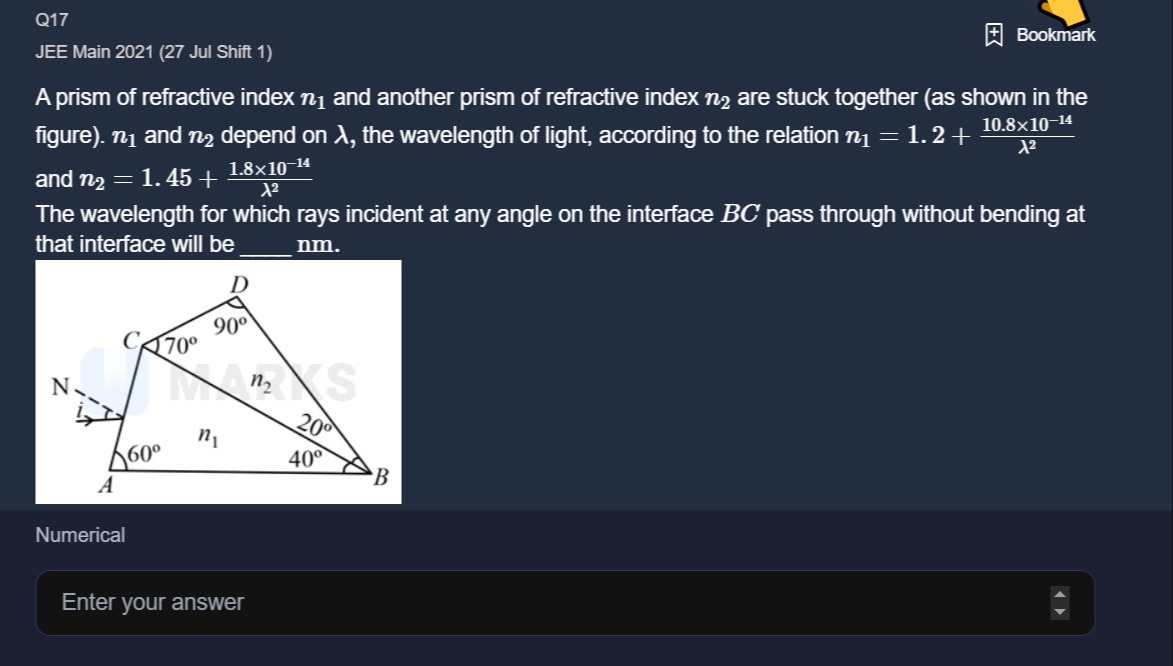Question
Question: A prism of refractive index $n_1$ and another prism of refractive index $n_2$ are stuck together (as...
A prism of refractive index n1 and another prism of refractive index n2 are stuck together (as shown in the figure). n1 and n2 depend on λ, the wavelength of light, according to the relation n1=1.2+λ210.8×10−14 and n2=1.45+λ21.8×10−14
The wavelength for which rays incident at any angle on the interface BC pass through without bending at that interface will be ______ nm.

Answer
600 nm
Explanation
Solution
We require that light passes from one prism to the other without bending at the interface. This implies that the light sees no change in refractive index, i.e., n1=n2.
Given:
n1=1.2+λ210.8×10−14,n2=1.45+λ21.8×10−14.Setting n1=n2:
1.2+λ210.8×10−14=1.45+λ21.8×10−14.Rearrange:
λ210.8×10−14−1.8×10−14=1.45−1.2.Simplify:
λ29.0×10−14=0.25.Solve for λ2:
λ2=0.259.0×10−14=36×10−14=3.6×10−13.Taking the square root:
λ=3.6×10−13=6.0×10−7m=600nm.